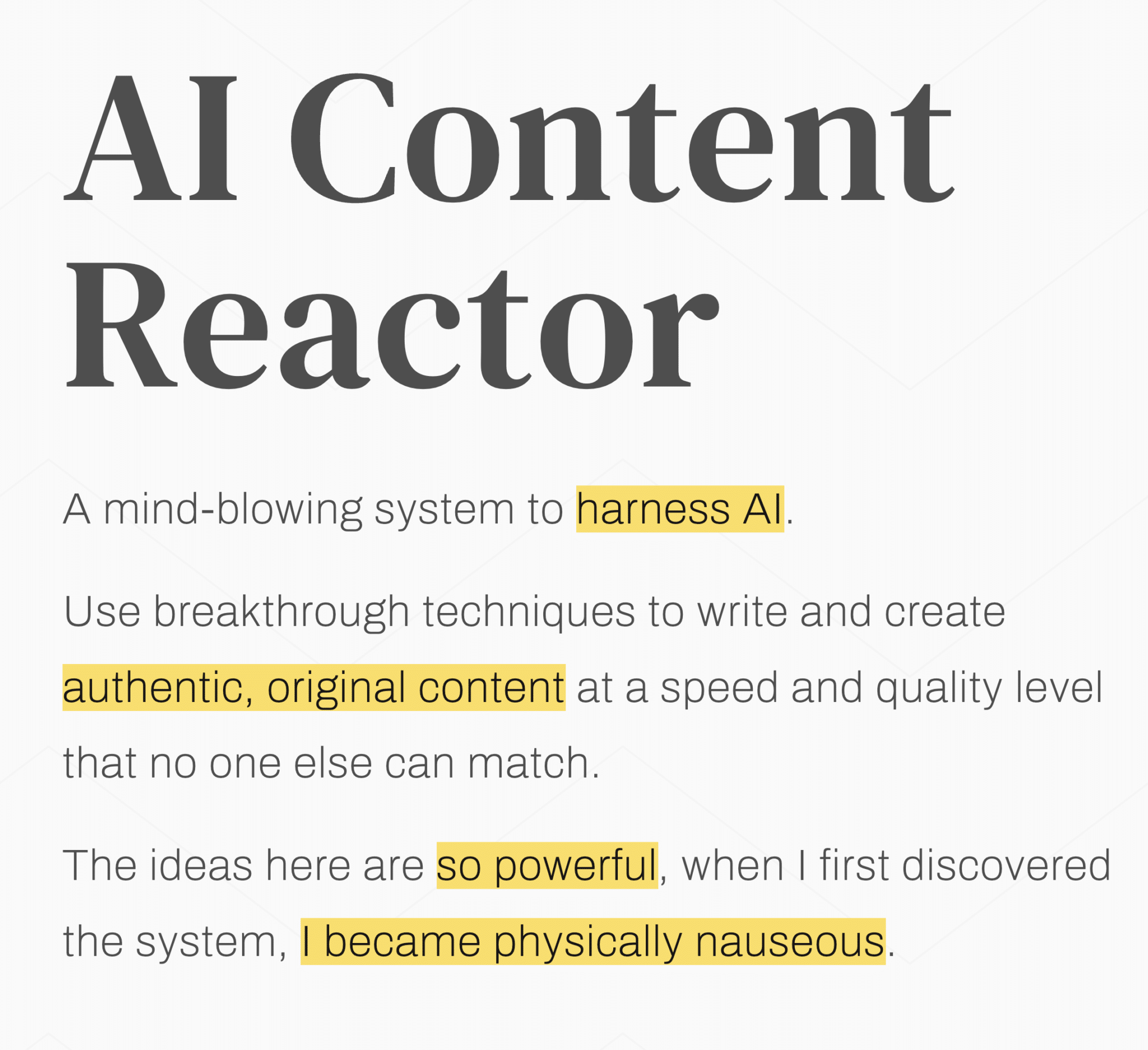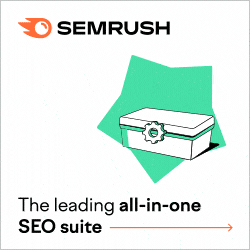The online landscape is changing, and search engines are refining how they evaluate content. One of those refining tools is E-E-A-T Experience, Expertise, Authoritativeness, and Trustworthiness. You’ll quickly see it plays a fundamental role in how Google assesses content quality.
Can E-E-A-T affect your ranking?
Yes, but not directly.
The elements it emphasizes; credibility, expertise, transparency contribute to signals that do influence rankings, like user engagement, backlinks, and content freshness. E-E-A-T gives you a guideline to make sure your content is considered reliable, which leads to better engagement and stronger ranking signals.
E-E-A-T => better credibility and engagement => stronger ranking signals => improved search visibility.
Let’s look more into what E-E-A-T is, what it’s used for (and by whom), and how it’s done.
Table of contents
- Can E-E-A-T affect your ranking?
- What is E-E-A-T?
- The Complete E-E-A-T Checklist
- 7 Ways to Strengthen E-E-A-T Over Time
- 1. Go Beyond Auditing – Reverse Engineer Competitor Authority
- 2. AI-Assisted Research, Human-Driven Insights
- 3. Strengthen Authority by Hosting Live Q&As and AMAs
- 4. Multi-Layered Author Authority
- 5. Feature Real Case Studies & Lessons from Failures
- 6. Create Different Backlink Strategies
- 7. Use Different Content Types for Stronger Engagement Signals
- Final Thoughts
What is E-E-A-T?
E-E-A-T stands for:
- Experience – Does the author or brand have first-hand knowledge of the subject?
- Expertise – Is the content created by someone who deeply understands the topic?
- Authoritativeness – Does the website have recognition and credibility within its niche?
- Trustworthiness – Can users rely on the information provided? Is the site secure and transparent?
The Evolution of E-E-A-T
Google introduced E-A-T (Expertise, Authoritativeness, Trustworthiness) in 2014 as part of its Search Quality Guidelines. The guidelines emphasize the importance of high-quality content, especially for Your Money or Your Life (YMYL) topics like finance and health.
In December 2022, Google added Experience to the E-A-T framework. This update embraces the fantastic idea that we trust content more when it comes from someone who has done what we want to do. Or has done extensive research into what we want to do.
For example, a fitness blog about marathon training would be easier to believe if the author had run several marathons. General training tips are okay sometimes, but knowing “why” you should believe what the author has to say matters.
Users enjoy more authentic, helpful, and trustworthy content. Google values content from those with real-world experience because it’s what users want.
How Google Uses E-E-A-T
Remember, Google doesn’t treat E-E-A-T as a direct ranking factor. That’s an important distinction to keep in mind. Putting up an authoritative page does not make a high-ranking site.
These guidelines help human quality raters properly assess whether a piece of content is credible. In turn, they provide feedback that helps Google improve its search algorithms.
Strong E-E-A-T signals can indirectly contribute to better search visibility by improving trustworthiness, engagement, and authority factors that do impact rankings.
For industries dealing with sensitive topics like finance, healthcare, or law, establishing E-E-A-T is critical to make sure users know your content is accurate and trustworthy. Inaccurate or misleading information in these industries can have serious, real-world consequences. While having strong E-E-A-T signals won’t guarantee a top ranking, it can help websites stand out in competitive search results.
The Complete E-E-A-T Checklist
Experience: Proving First-Hand Knowledge
We’ve discussed how content is easier to trust if the person writing it has actually done what they’re writing about. What does experience look like?
Do you have any real-life examples, case studies, or personal experiences that support your content?
You can show experience through personal stories, professional case studies, or hands-on knowledge of a subject. Real-world experience is often more engaging, reliable, and valuable for your audience.
Do you include different perspectives?
You might include articles written by team members, links to industry professionals, or client testimonies. These increase trust and authority in your field.
Do you offer guides on how to do something?
Detailed explanations can break down complex topics (like this one) and make them more helpful for your audience. A step-by-step guide, for example, would help readers understand how a specific process works.
Do you share your data and research?
If you have it, sharing your findings sets your content apart. It also provides valuable, unique insights that other resources might not have.
Expertise: Establishing Credibility
If you have expertise, you’ve demonstrated deep topical authority about a subject. You can demonstrate topical authority by completely covering a topic. Of course, the information should be well-researched, accurate, and high-quality.
Google looks for signals that show expertise, like author credentials, industry recognition, and well-researched content.
Does your content cover topics in depth?
No more general articles, people. Take the time to expand and expound on hyper-focused content.
For example, you own a new coffee shop in San Francisco (who doesn’t). You like coffee a lot (who doesn’t). Now is your time to write about what you love.
How can coffee shops get their espresso to keep you going all day, but you make espresso at home, and it only gets you ten feet out the door? Feel free to share that secret!
Do you have pillar pages?
Think of pillar pages as the main page of a topic. If you want anyone to go to any specific page on your site about “x,” this is it. You can have several web pages about “x,” but your pillar page is the table of contents for the topic.
Pillar pages don’t explicitly boost E-E-A-T. However, they help users find relevant content faster, which improves engagement–a ranking factor.
Pillar pages use internal links to take the reader deeper into the site based on keyword research and search intent. One path may lead to supporting blog posts. Another link on the page may lead to products or services related to the pillar page.
Do you showcase your authors?
Even if there is only one, answer the question, “Why should we listen to this person?” When you link to their author page, display their credentials. Give them a bio section and share their relevant experience.
Do you link to reputable studies and sources?
This is called “borrowed authority,” and it’s your friend. Linking to studies and sources with more authority than you gives you perceived authority.
That’s why linking to recent industry insights from credible sources is essential. Linking to decade-old data put together by a company that no longer exists isn’t valuable for your readers.
Authoritativeness: Building a Recognized Presence
The other half of topical authority is built over time through recognition and credibility within your industry. Because you’re developing relevant, helpful content, others will reference, cite, or collaborate with you to build more content. In other words, you become the “authority” that other people in the industry are “borrowing” from. This shows users and search engines that your expertise is valued.
Are other sites sharing your content?
The more respected industry sites give you backlinks or mention you, the more authority you gain. Although it’s nice when these sites link to you without any outreach, this usually takes concentrated link-building to get going. Creating high-quality content and sharing it with select sites can help drive those backlinks and organic traffic.
Have you been featured in relevant interviews, podcasts, or guest posts?
Relevance is key. For example, if you own a cannabis brand and you were mentioned in Leafly, you’re on your way to gaining authority. However, that same brand doing a podcast on Personal Insurance Weekly will just… do a podcast. It’s the wrong audience and not relevant.
Is your brand consistent?
Consistency is important, from your LinkedIn company picture to the logo on Twitch and the language used on YouTube. You want to build a brand that is instantly recognizable by its voice, tone, and message.
Trustworthiness: Ensuring Transparency & Reliability
Trust is as important as the rest and a critical part of building your online presence. Readers and search engines like Google want to know you’re providing accurate, secure, transparent information. Establishing trust is one of the most uncomplicated, but often overlooked actions.
Do you clearly display your business credentials, contact details, and policies?
We’ve been talking about trust signals for years, and we’ll be talking about it years from now. If you have won a service award from Angi’s, we want to see it. If you’re an A+ member of the Better Business Bureau, showcase it.
Do you share how people can reach you?
Share your phone number and email address. If you don’t serve people at your address, that’s fine, but how do they reach you other than [form]? How do you deal with refunds or customer complaints?
Clearly outline your:
- privacy policy
- cookie policy
- shipping policy
- returns and refunds policy
- terms of use
- editorial policy
Is your site protected with HTTPS and compliant with privacy standards?
Security and privacy are big points. If you’ve ever reached a site that shows “NOT SECURE”, you know how intimidating it can be. You want to make sure your site is secure behind SSL. Talk to your hosting provider if you don’t know what that means.
Do you allow negative customer reviews?
The hardest thing to do is let people see a negative review. You REALLY want to remove it, right?
However, the best thing to do is to answer it authentically. If you messed up, own it. If you didn’t, own that. Always respond, but always respond with integrity and dignity.
7 Ways to Strengthen E-E-A-T Over Time
Like anything in marketing, E-E-A-T isn’t something you set up and don’t touch again. It requires consistent (although not constant) effort and strategic thinking. Here are ways to build your content credibility and authority:
1. Go Beyond Auditing – Reverse Engineer Competitor Authority
Many brands focus on auditing their own content, but what about your competitors?
- Identify high-ranking competitors in your niche and analyze why their content performs well.
- Use tools like Wayback Machine to see how their content has evolved. Are they improving engagement through better storytelling, original research, or more expert opinions?
- Don’t just “match” them—outdo them with more in-depth research, multimedia, and insights they missed.
- Say “no” to thin content. Quality should always go over quantity. If you can only put out one article a month, no problem! Put in the time and research to make it a “knock your socks off” piece of bookmark- and share-worthy content.
2. AI-Assisted Research, Human-Driven Insights
AI is an incredible tool for content research, and it can help you with a few different perspectives you may not have thought about.
However, you need to add original human insights to stand out. No AI language model is good enough to create content without human review. Instead, you can use AI to gather trend data while validating findings from your real-world experience. You can also:
- Introduce “insider secrets” from industry experts that AI can’t generate.
- Share proprietary data, if your company has unique stats or case studies, these are gold for building credibility.
3. Strengthen Authority by Hosting Live Q&As and AMAs
Nothing builds trust like real-time interactions. While most brands focus on pre-recorded content, you can level up by:
- Hosting live Q&A sessions on LinkedIn, YouTube, or YouTube.
- Inviting industry peers or clients for “Ask Me Anything” (AMA) sessions.
- Answering controversial or complex questions in real-time, showing expertise and confidence.
4. Multi-Layered Author Authority
Google favors content written by real experts, but you can take it further. Instead of writing all your posts with internal authors, publish contributions from industry pros with verified credentials. Get your team involved. Have subject matter experts write or contribute quotes to the content.
You also want to make sure you and your authors have filled out your bios on other platforms. Medium, LinkedIn, X, industry sites–if there’s a place to put more than your name, make sure you’ve filled it out.
5. Feature Real Case Studies & Lessons from Failures
Most brands highlight success stories, but failure teaches as much as success. It’s okay to share lessons from your mistakes and how you corrected them. No business story is perfect, even for unicorns, and nothing’s more genuine than admitting you’ve made a mistake.
6. Create Different Backlink Strategies
Don’t just rely on guest posts and outreach. You can build backlinks by differentiating yourself:
- Create niche data reports. Conduct surveys and publish unique industry findings that others will reference.
- Offer expert commentary. Qwoted — Connect with industry experts instantly and diversify your sources all in one place. Tapping into Qwoted’s network of experts helps you get multiple pitches fast.
- Develop interactive tools. Calculators, quizzes, or industry benchmarks can naturally attract backlinks.
These three strategies aren’t for every industry. How many niche data reports can you do about the type of wax used in candles, for example? Yet, you’d also be surprised about what people are interested in!
7. Use Different Content Types for Stronger Engagement Signals
You don’t have to stick to text-based content, either. Interactive elements, as well as short-form videos, are often very successful. Adding audio versions of top posts can also add engagement.
Final Thoughts
As marketers and optimizers, it’s often hard to look at anything from an angle other than “What do the Google algorithm gods want?” But E-E-A-T goes beyond making Google-friendly content.
Don’t get stuck on the ranking hamster wheel: Do I rank in the top 3? Yes. Wait, no. Okay, yes.
E-E-A-T isn’t about ranking. It’s about building real credibility, trust, and authority over time. Successful brands embrace transparency, build on new engagement tactics, and consistently deliver value.
Need help developing a rock-solid E-E-A-T strategy? Contact Level343 today, and let’s build your authority together.




































2 Responses
Hi there – I’m not too certain it’s good for your EEAT that you mention HARO – a program that was discontinued back in November 2024 😉
https://www.seroundtable.com/haro-connectively-platform-closing-38388.html
Otherwise, though, a profound & well-written article that was fun to read!
Best wishes,
Christian Stenger
Ouch, indeed… thanks for the heads up. I’ll let the author know!!